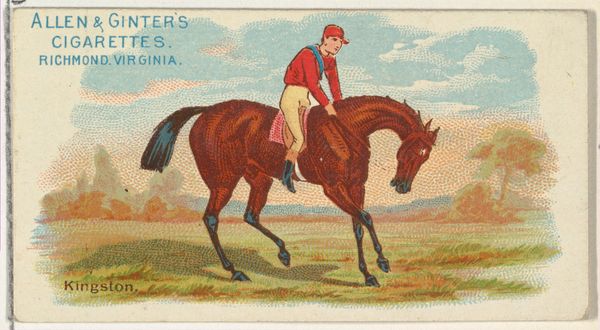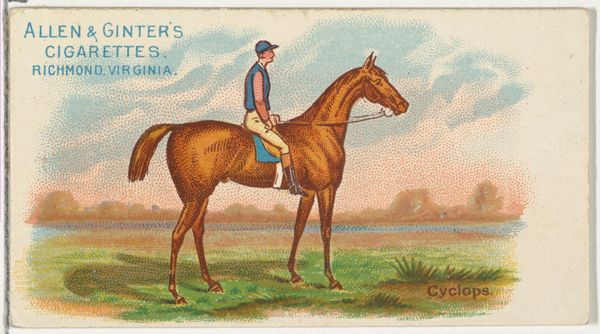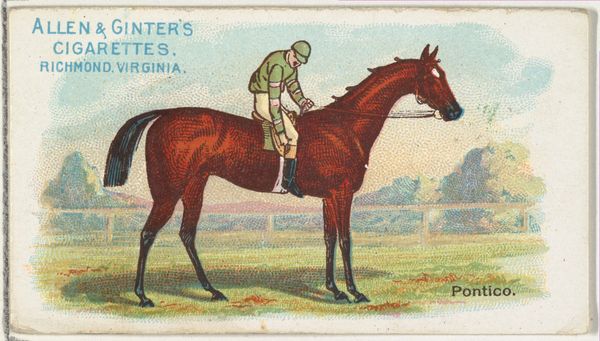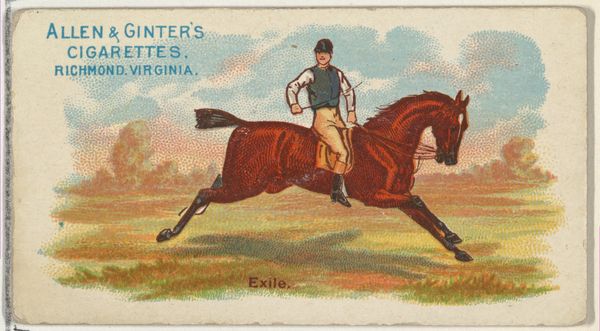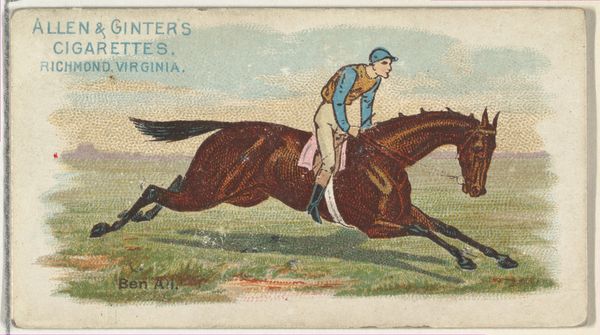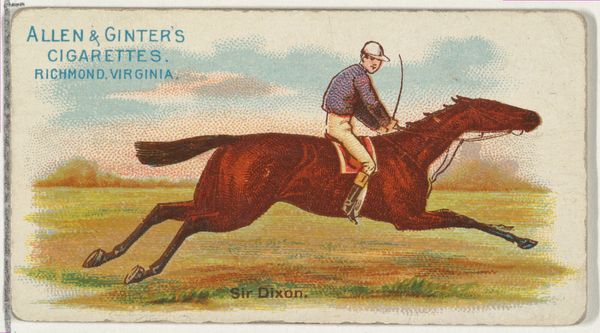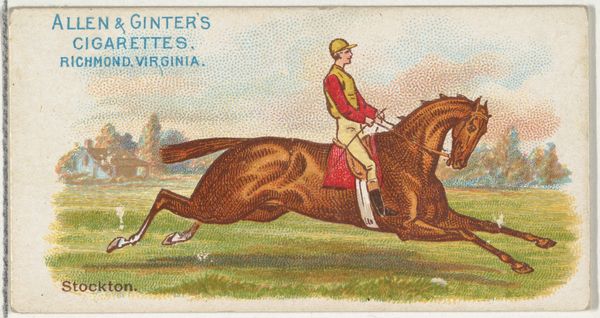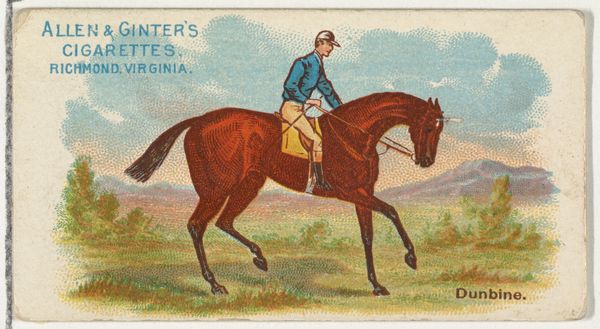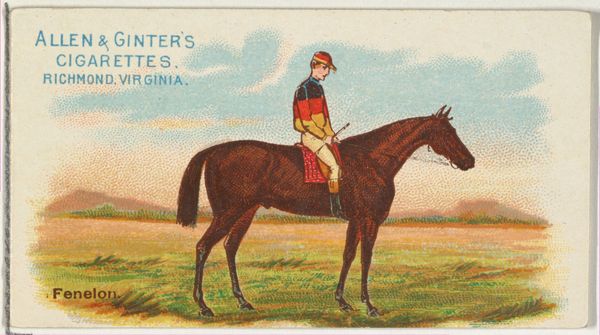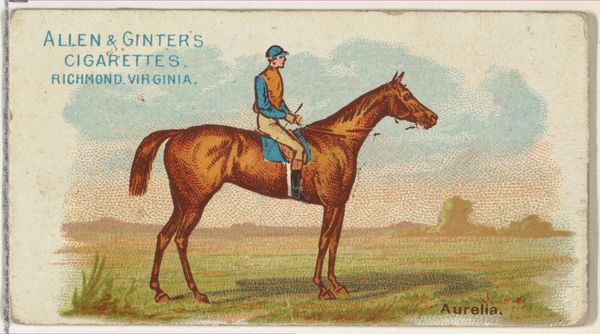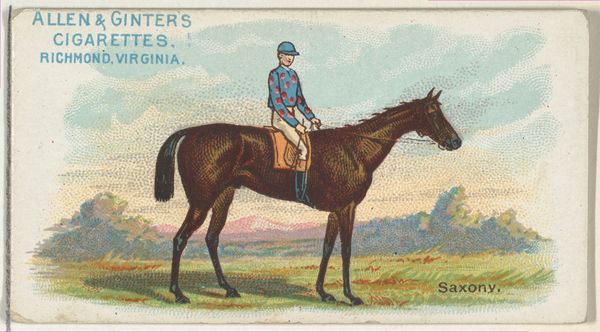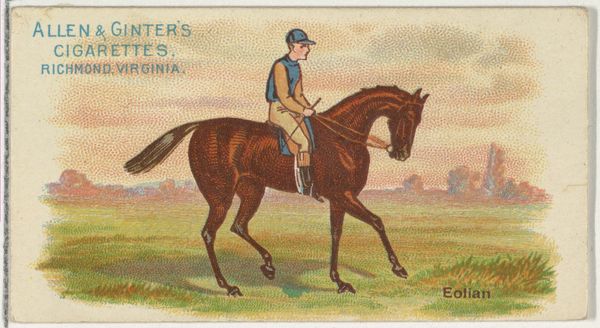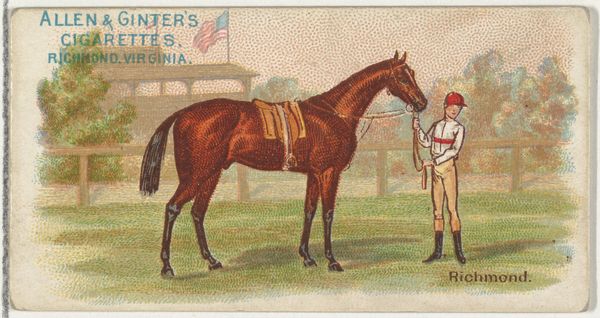
Favor, from The World's Racers series (N32) for Allen & Ginter Cigarettes 1888
0:00
0:00
drawing, coloured-pencil, print
#
drawing
#
coloured-pencil
# print
#
impressionism
#
caricature
#
caricature
#
coloured pencil
#
horse
#
genre-painting
Dimensions: Sheet: 1 1/2 x 2 3/4 in. (3.8 x 7 cm)
Copyright: Public Domain
Curator: Look at the somewhat chaotic energy in this print—a horse rearing wildly, yet presented in this flattened, almost humorous style. Editor: This is "Favor, from The World's Racers series," made by Allen & Ginter Cigarettes around 1888. It’s a color print and drawing done with colored pencil; quite a different function of art than what we typically display here, wasn't it? Curator: Absolutely. Think about the materials at play—a commercial product, cigarettes, embedding art into everyday life in 19th century America. And specifically, how the printing process made art accessible on a wider scale. How different from an oil painting that may take many hours of labour? Editor: Right. It’s part of a set that reinforces both social status and cultural values of the time, especially concerning leisure. Horse racing was predominantly associated with the upper class; this image, then, performs cultural work solidifying those hierarchies for its largely white, male audience. It almost has an ethnographic purpose by subtly portraying how gender, class and identity mix during this historical event. Curator: Precisely. We must not neglect how the horse and the jockey were made and then consumed. Consider also that mass-produced cigarette cards brought imagery of sports and leisure activities directly into homes and pockets across class lines—the accessibility changed patterns of consumption and reception of artworks Editor: The rider is such an elusive presence in the visual frame, and "Favor", well the horse has more agency as it thrusts in such a dramatic fashion that can be easily consumed. The "impressionistic" style adds a sense of dynamism while softening potential aggression which perhaps suits the consumers to imagine their world outside daily grinds. It normalizes ideals, but doesn't go so far as to upset viewers or buyers with social critique! Curator: I think by analyzing these overlooked artifacts from daily life, we can start appreciating that what is often disregarded provides incredible details and perspective regarding cultural change through making processes. Editor: Agreed! What’s deemed art, what's craft, what is consumed, by whom and why...so many narratives spring from such seemingly simple mass-produced objects!
Comments
No comments
Be the first to comment and join the conversation on the ultimate creative platform.

